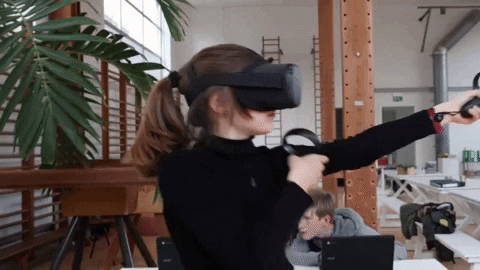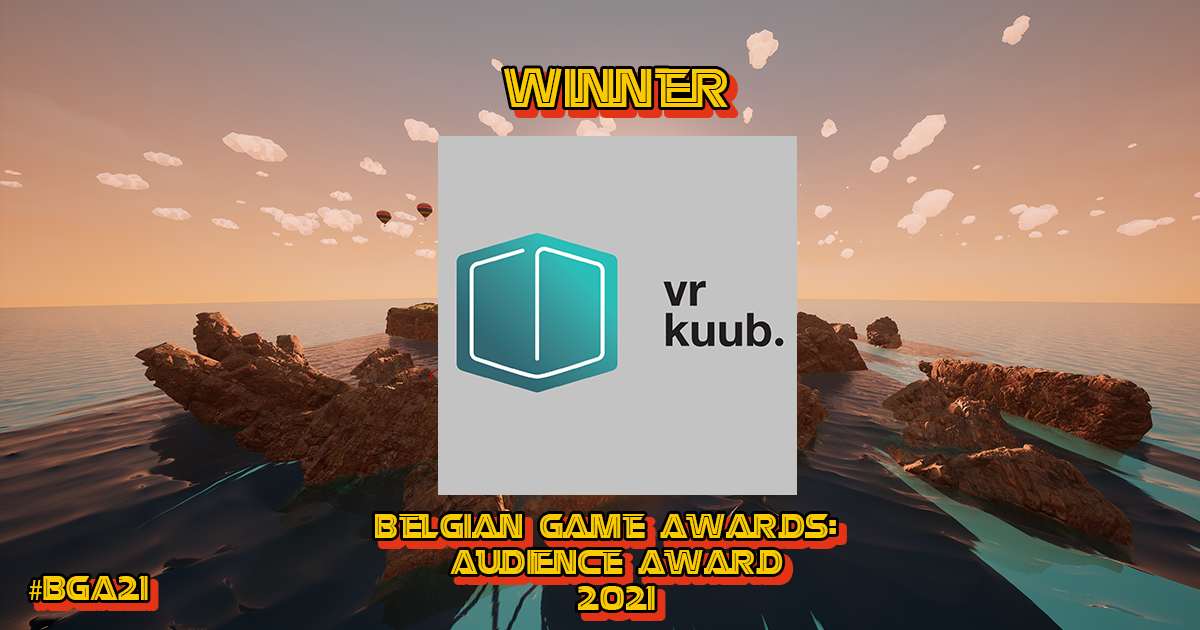We’re thrilled to share that VR-KUUB, a VR game we’ve been creating with Scholengroep 20, is a finalist for the Belgian Games Awards’ Audience Award! In this article you can find out more about the game and learn some behind-the-scenes secrets on the development process.
VR-KUUB is an educational virtual reality game that we have been working on together with Scholengroep 20. It requires a team: one player with a VR headset and friends that help solving a bunch of puzzles.
So how does it work?
The one player wearing the VR headset has to describe the tasks they see to the others. Based on these descriptions, they all have to put their heads together and find the correct solutions. It’s all about teamwork!
VR-KUUB teaches children about various topics in a fun and interactive way. In one of the missions, for example, the player in VR sees six totems. Every totem has an image with a different leaf on it. On a table, there are six cubes, each one with a different nut on it. So the player in VR has to describe these to the players at the pc’s. They need to find the correct trees and communicate the connections to the player in VR without seeing the pictures.


In another mission (image to the left), the player must shoot the drone that’s the ‘odd one out’. The drones in the game are all holding an image of a human organ. One of these organs is not part of the digestive system (spoiler: it’s the lungs).
During the mission, the players all have to work together to find the odd one out. They can also use an internet browser for help so the game improves problem-solving skills, communication skills, and digital skills as well.
One more mission example. In a mission of type ‘Octopus’, players have to put the images of famous monuments in the correct order based on how tall they are. Again, the player with the headset needs to first recognise these buildings or describe them well enough to their team so they can identify them. In the meantime, the player in VR is attacked by a nasty robot squid that spits out ink. Since the team only gets two chances to get the order right, the pc players should look up the monuments and figure out the correct order together.

Oh, did we mention that there is a time limit as well? The clock is ticking so you have to be fast!
How did the development work?
Scholengroep 20 was trying to find a way to include some general skills, such as efficient communication and creative problem solving, in their curriculum. They wanted to develop an innovative solution that could also combine these skills with existing subject matter. Since they were thinking about a VR game, something we had a solid amount of expertise and previous experience in, they joined forces with us, Cybernetic Walrus. We started out with a brainstorm, taking Keep Talking and Nobody Explodes and Spaceteam as a base inspiration to craft a collaborative game where only one headset would be needed.

We developed VR-KUUB for Oculus Quest. Because this is a mobile platform, and we usually deliver high-end 3D graphics, we had to adapt to these technical limitations. Content-wise, the biggest challenge was coming up with games and missions that did not require text. Also, during the prototype phase, we experimented heavily with the flow of the game, and how a teacher should create and access missions.
Eventually we could deliver a solid educational game thanks to a close collaboration with Scholengroep 20 and testing with pupils. The game is now released only on select schools and with limited content, but the idea is to make fully polished version that could be distributed to all Belgian schools, with extra mission types and a user-friendly content creation system.
UPDATE: We won! VR-KUUB grabbed the Audience Award! Thanks to everyone who voted.

